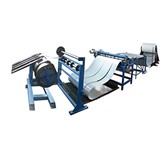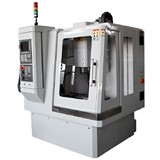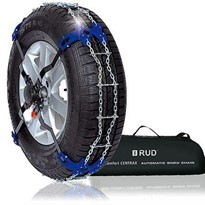When designing or optimising manufacturing processes, it’s important to understand the pros and cons of differing production line configurations.
Which Style?
The best style to use depends on:
- the products being made,
- the volumes being run
- flexibility required
- the space requirements
- equipment in use
- the manufacturing environment.
Let’s take a look at the various types, discussing their key features, advantages, and challenges.
By understanding them, manufacturers can better tailor their operations to meet the demands of their market and product portfolio.
1. Block Lines
Block lines, also known as fixed or synchronised lines, are characterised by machines that operate at the same speed with minimal or no conveyor space between them.
These lines are often arranged in a single-track configuration, where the machines are closely linked and synchronised.
Key Features:
- Machines run at uniform speed.
- Minimal spacing between machines (single-track setup).
- Highly synchronised operation with linked PLC controls.
Advantages:
- Simplicity in Control: Because all machines run at the same speed, the control system is straightforward.
- Efficiency in Compact Spaces: Block lines are ideal in environments with limited space, as they don’t require large conveyor systems between machines.
Disadvantages:
- High Sensitivity to Disruptions: A stop in any machine immediately impacts the entire line, potentially causing significant downtime.
- Limited Flexibility: The rigid synchronisation of machines makes it difficult to adapt the line to changes in production demand or product types.
2. Dynamic Flow Lines
Dynamic flow lines are designed to accommodate varying production speeds and conditions, allowing for a more flexible and responsive production process.
These lines use sensors, smart controls, and Machine to Machine (M2M) communication to adjust speeds dynamically based on real-time conditions.
Key Features:
- Machines operate at varying speeds, adjusted dynamically.
- Advanced use of sensors and PLC communication.
- Greater adaptability to changes in production demand.
Advantages:
- Flexibility: Dynamic flow lines can adjust to different product types and production volumes, making them ideal for environments where production needs vary frequently.
- Reduced Downtime: By dynamically adjusting speeds and flows, these lines can better handle minor stoppages without shutting down the entire line.
Disadvantages:
- Complexity in Control: Managing a dynamic flow line requires more sophisticated control systems and programming, which can be challenging to implement and maintain.
- Higher Initial Costs: The advanced technology and sensors needed for dynamic flow lines can make them more expensive to set up initially.
3. Accumulation Lines
Accumulation lines are designed with significant conveyor space between machines to allow for the temporary storage, or accumulation, of products between processing stages.
Accumulation lines can help to manage minor disruptions by isolating machine stoppages, thus minimising their impact on the entire line.
Key Features:
- Significant conveyor space between machines for product accumulation.
- The 'critical'* machine serves as the bottleneck, determining overall line performance.
- Machines upstream or downstream can operate at different speeds relative to the critical machine.
Advantages:
- Isolation of Disruptions: Accumulation allows minor stoppages or speed variances to be absorbed, preventing immediate impact on the entire line.
- Increased Line Efficiency: By managing accumulation effectively, the line can continue operating even if one machine experiences a temporary issue.
Disadvantages:
- Space Requirements: Accumulation lines require more factory space due to the additional conveyor systems.
- Complex Balancing: Maintaining the right balance between machines to ensure smooth operation can be challenging and may require continuous adjustments.
* Typically, the machines on a line can operate at varying speeds, with one machine or a group of machines usually being the slowest in the line. This slowest machine is known as the bottleneck or "critical" machine. The efficiency and performance of the entire line, as measured by Overall Equipment Effectiveness (OEE), are largely dependent on the critical machine operating at its designated speed.
4. Continuous Flow Lines
Continuous flow lines are used for mass production of identical products where the process is continuous and unbroken.
These lines are common in industries such as food processing and chemical production.
Key Features:
- Uninterrupted production process.
- Highly automated with minimal human intervention.
- Standardised and consistent output.
Advantages:
- High Efficiency: Designed for high-volume production with minimal downtime.
- Consistency: Ensures uniform product quality.
- Scalability: Easily scaled up to meet increased demand.
Challenges:
- Inflexibility: Not suitable for producing customised or varied products.
- High Setup Costs: The initial setup is expensive due to the specialised equipment required.
5. Batch Production Lines
Batch production lines produce a set quantity of a product before switching to a different product.
This type of line is ideal for industries where products are made in groups, such as pharmaceuticals and electronics (or even paint).
Key Features:
- Production in set batches with reconfigurations between batches.
- Versatility in handling different products.
- Flexibility in production scheduling.
Advantages:
- Versatility: Can handle a variety of products and production runs.
- Reduced Inventory Costs: Lower need to maintain large inventories.
- Customisability: Easily adjusted for different products or variations.
Challenges:
- Downtime Between Batches: Switching between batches can cause downtime.
- Complex Scheduling: Requires careful coordination to ensure the availability of materials and resources.
6. Cellular Manufacturing Lines
Cellular manufacturing lines organise workstations and equipment in a cell to produce a product or family of products more efficiently.
This approach is common in lean manufacturing environments.
Key Features:
- Workstations arranged to minimise movement and handling.
- Cross-trained operators performing multiple tasks.
- Focus on waste reduction and efficiency.
Advantages:
- Efficiency: (In the context of human resources). Reduces movement and handling, increasing productivity.
- Quality Control: Greater accountability and focus on quality.
- Flexibility: Cells can be reconfigured easily for different products.
Challenges:
- Setup Complexity: Requires careful planning and design.
- Skilled Labor Dependency: Needs skilled workers who can perform multiple tasks, increasing labour costs.
7. Flexible Manufacturing Systems (FMS)
Flexible manufacturing systems are highly automated production systems that can easily adapt to produce different products or variations.
They are used in environments with unpredictable demand or customisation needs.
Key Features:
- Machines integrated with computer systems for rapid adjustments.
- High automation with minimal manual intervention.
- Capable of producing a variety of products in small to medium quantities.
Advantages:
- High Flexibility: Quickly adapts to different products or configurations.
- Reduced Lead Times: Faster time to market due to rapid adjustments.
- Cost Efficiency: Reduces downtime and retooling costs.
Challenges:
- High Initial Investment: The technology and automation are costly.
- Complex Maintenance: Requires specialised knowledge for maintenance.
8. Assembly Lines
Assembly lines are the most common type of production line, where products are assembled in a step-by-step process as they move along a conveyor.
This type is widely used in industries like automotive, electronics, and appliances.
Key Features:
- Sequential assembly of products along a conveyor.
- Specialisation of tasks at each workstation.
- Mix of automated and manual processes.
Advantages:
- High Efficiency: Optimised for rapid production of large quantities.
- Cost-Effective: Specialisation of tasks lowers labour costs and increases output.
- Consistency: Standardised processes ensure uniform product quality.
Challenges:
- Limited Flexibility: Difficult to adapt to new or different products.
- Demand Dependency: Efficiency is tied to consistent demand.
Comparison and Suitability
We're talking generalities here; however, it can be said that:
- Block Lines are best suited for high-volume, consistent production environments where the same products are produced continuously and disruptions are minimal. Ideal for industries where products are uniform and produced continuously, such as in automotive manufacturing or electronics assembly. The modular nature of block lines allows for efficient scaling and minimal disruptions.
- Dynamic Flow Lines are ideal for environments where production requirements frequently change. Perfect for industries like consumer electronics, fashion, or custom manufacturing, where flexibility is essential to adapt to different product types or designs.
- Accumulation Lines work well in complex production environments where machine performance varies, and minor disruptions are common. They are particularly useful in processes where certain machines, such as fillers or packers, operate as bottlenecks. Suitable for industries like food and beverage processing or pharmaceuticals, where some stages may operate at different speeds or face occasional disruptions, and buffering can smooth out production flow.
- Continuous Flow Lines are best for high-volume production of standardised products. Ideal for industries such as chemicals, petrochemicals, or food processing, where products are produced in large quantities with consistent specifications and the process runs non-stop.
- Batch Production Lines work for production environments requiring flexibility for different product types or specifications. Best for industries like specialty chemicals, pharmaceuticals, or custom machinery, where products are made in batches and may vary in quantity and design.
- Cellular Manufacturing is used where efficiency and workflow optimisation are crucial. Suitable for industries such as aerospace, medical device manufacturing, or any field where a variety of components or products are made, and reducing material handling and setup time is important.
- Flexible Manufacturing Systems (FMS) are perfect when you need high adaptability and low setup times for a wide range of products. Ideal for industries like automotive parts manufacturing or electronics, where production needs frequently change and quick reconfiguration is beneficial.
- Assembly Lines are for high-volume, repetitive production of standardised products. Commonly used in industries such as automotive assembly, consumer goods, or household appliances, where products follow a fixed design and the efficiency of sequential operations is key.
The advent of sophisticated line control software solutions has created some overlap. For instance, DuluxGroup's Industry 4.0 batch production plant in Victoria uses Foodmach's LineMES to automate every aspect of its batch production, reducing disadvantages like downtime during changeovers or materials availability. The Dulux factory is so automated that it could offer personalised production if it wished to!
Conclusion
The selection of a production line type depends on the specific needs of the manufacturing process.
Each type of production line offers unique advantages and challenges, making it essential for manufacturers to carefully evaluate their options so they:
- maximise efficiency,
- reduce costs, and
- achieve the desired production outcomes.
We work primarily with automated lines for production and packaging in the food, beverage, personal care, over-the-counter, home care and industrial batch production industries.
OEE is a key performance indicator of line efficiency for our customers. Every manufacturer on the planet using automation wants to improve its OEE score.
Some manufacturers could increase their OEE by using accumulation (or even dynamic accumulation), and most could benefit from line balancing.
Anyone with an automated line—in any industry—could benefit from a manufacturing execution system combined with PLC-level machine integration and built-in OEE reporting.
By partnering with an OEE expert, you can be sure to enjoy a production line that’s operating at its most efficient.




















-160x160-state_article-rel-cat.png)





























